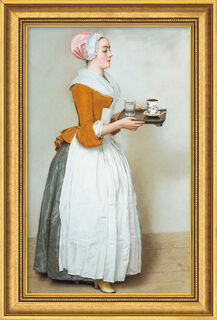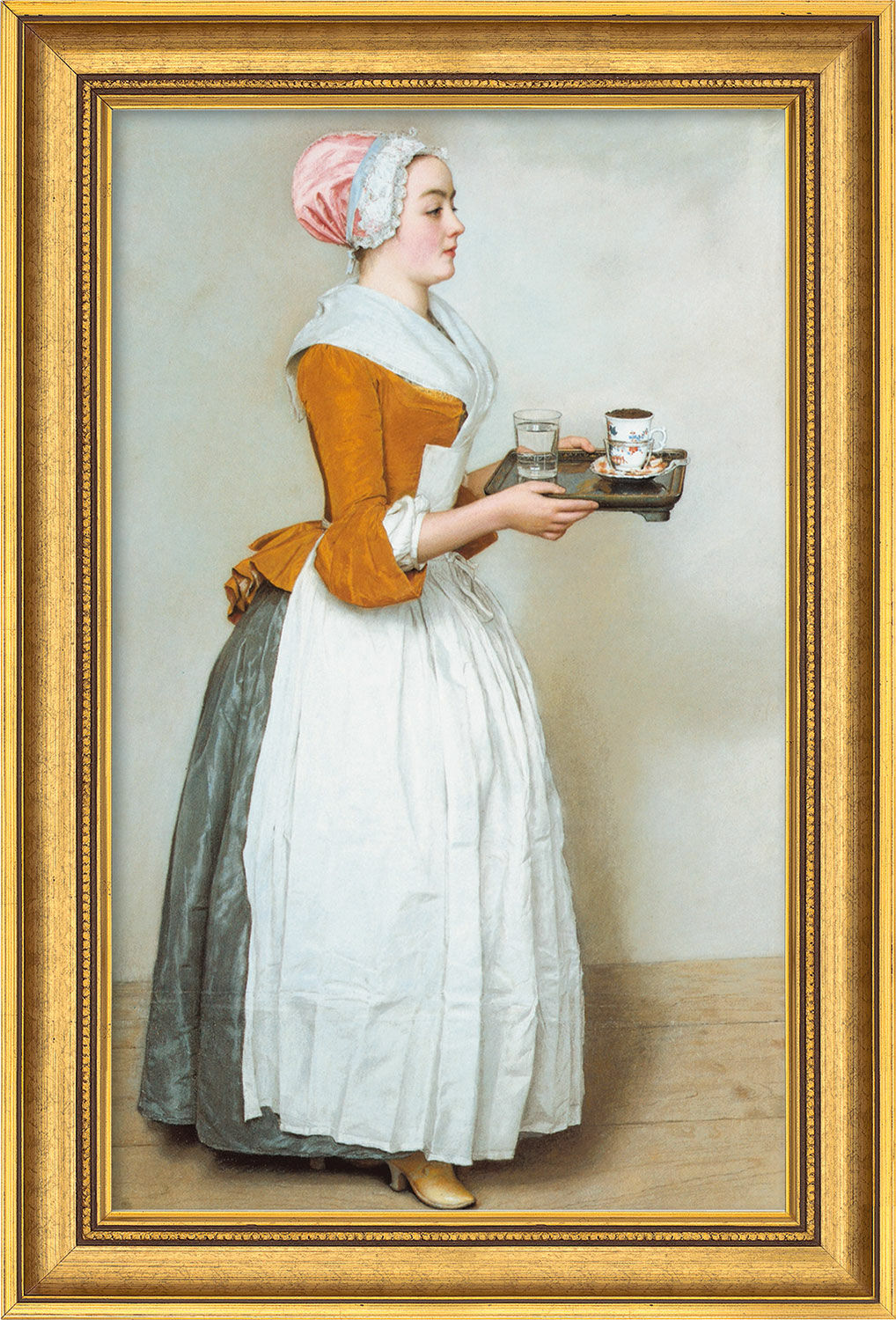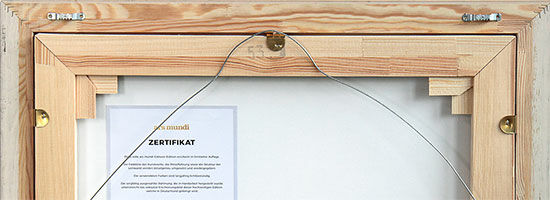Picture "Chocolate Girl" (1743-45), framed


Picture "Chocolate Girl" (1743-45), framed
Quick info
reproduction, Giclée print on canvas | on stretcher frame | framed | size 59 x 40 cm (h/w)
Detailed description
Picture "Chocolate Girl" (1743-45), framed
The elegantly dressed chocolate girl captivates with her graceful charm. Her youthful face radiates freshness and naturalness. With concentration, she carries a small lacquer tray with a cup of chocolate and a glass of water. The picture was painted between 1743 and 1745 at the court of the Austrian Empress Maria Theresa. During this time, the Swiss artist Jean-Étienne Liotard stayed in Vienna to paint portraits of the empress and her husband.
Original: 1743-45, pastel painting on parchment, 82.5 x 52.5 cm, Old Masters Picture Gallery, Dresden.
High-quality reproduction using the Fine Art Giclée process, handmade on an artist's canvas of fine cotton and stretched like an original painting on an adjustable solid wood stretcher. The canvas structure is tangible and visible! In handmade gallery frame. Size 59 x 40 cm (h/w).
Frame configurator
Customised picture frame

Frame configurator
Customised picture frame






Customer reviews
Frame variant: framed
Frame variant: framed
Prompte Bedienung
Epochal term for the art of the 17th century. The Baroque style of art, which originated in Rome around 1600, permeated visual arts, literature and music practically all over Europe within a very short period of time and lasted until 1770 in the visual arts. The last phase is generally characterised by Rococo.
Characteristic features include: the pulsating movement of all forms, the abolition of boundaries between architecture, painting and sculpture, that resulted in the epoch typical "Gesamtkunstwerk" ("total work of art"), and especially the purposeful use of light, which became an important artistic component. The subordination of the individual parts to the whole resulted in the creation of a unified and, at the same time, dynamic space, which is fully expressed in the magnificent buildings of this period.
The Baroque art, with its penchant for grandeur, splendour and rushing abundance, clearly reflects the desire for representation, which was a concern of secular and ecclesiastical, especially the Catholic, patrons of the time, who were strengthened by the Counter-Reformation. In painting, characteristic features of the Baroque, are manifested in the altar and ceiling painting, history and portrait.
Typical representatives include artists such as Anthony van Dyck, Peter Paul Rubens as well as Gian Lorenzo Bernini in the field of sculpture.
Giclée = derived from the French verb gicler "to squirt, spurt".
The giclée method is a digital printing process. It is a high-resolution, large-format printout on an inkjet printer with special different-coloured dye- or pigment-based inks (usually six to twelve). The colours are fade-proof, i.e. resistant to harmful UV light. They have a high richness of nuance, contrast and saturation.
The giclée process is suitable for art canvases, handmade and watercolour paper as well as for silk.






